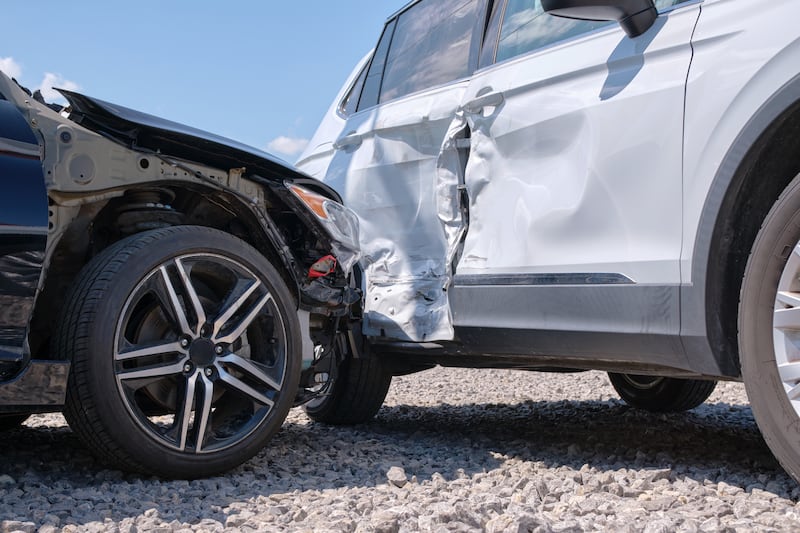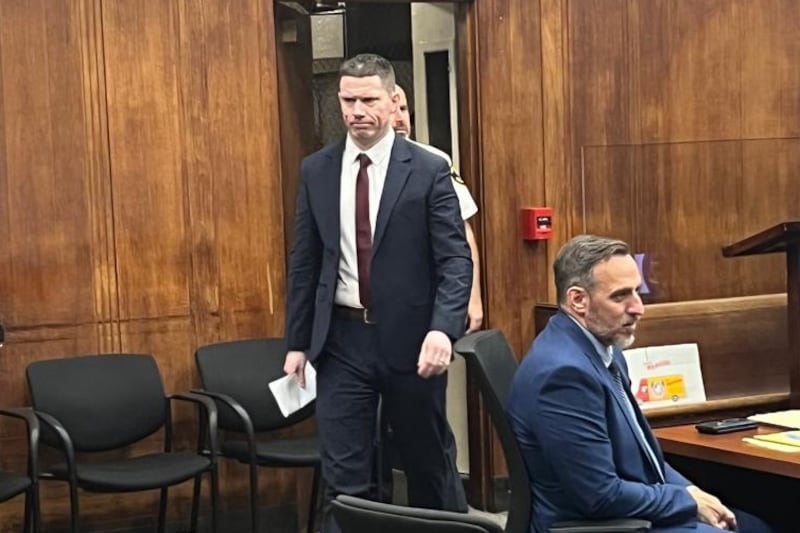Memory can be elusive. Sometimes it slides away as you try to pin it down. Apart from the few that are framed, and one or two albums, most of our old family photographs live in a wooden box that we seldom open. We keep meaning to go through them, but somehow never get round to it. Recently, Mum gave me some keepsakes. Among them was a small round frame containing a black-and-white photo of a woman posing beside the statue of a horse. There was also a necklace, and a tiny pearl pin in the shape of an O.
“Is that your granny?” I asked. Instead, the photo turns out to be Great Auntie Kate, who was the subject of many stories growing up. I find it oddly impossible to link the glinting Venetian glass beads with ones the woman is wearing in the picture, but there they are, connecting us across time. Great Aunt Kate became a Ladies’ Companion, back in the days when people did things like that, says Mum.
She recounts how her own mother grew up with Aunt Kate’s sister, who had worked looking after the children of the owners of the local pub. Mum’s mum was handed in as a baby, wearing that pearl pin, with a message requesting that she be called Olive and raised a Catholic. She didn’t know she was adopted until she was in her teens, when one of her teachers announced it to the class.
As Mum retells the story, ignited by the photograph, it makes me consider that it must be very strange to be an aristocrat. Imagine living in a world in which the names of all your ancestors, going back hundreds of years, are known to you – and others, their stories fully intact. It must provide a kind of anchor, a foundation for knowing who you are. I think of my granny, suddenly adrift. For most of us, time muddles memories, and things get murkier as you go back through the generations. Even immediate family stories can get confused, or lost altogether.
RM Block
DNA testing, websites such as ancestry.com, and the popularity of shows such as Who Do You Think You Are?, has made genealogists of many, but it’s an odd paradox that the more we become interested in where we have come from, the less time we devote to marking our present lives, no matter how many selfies we take. Family photographs can provide a vital link to the past, and an increasing body of research is demonstrating how reminiscence therapy can help people living with dementia, Alzheimer’s disease and other forms of cognitive impairment and memory loss.
Caroline Carr, an assistant curator at Donegal County Council, brings memory boxes, including photographs and other items from the county collection and archives to care homes and day centres. The objects and images, which include everything from carbolic soap to an enormous pair of bloomers (knickers), spark memories and create conversation. “You get to hear the maddest stories, you get to hear the saddest stories, you get to hear extraordinary things they never probably even told any of their family members. People really open up. It’s amazing,” she says.
[ New exhibition shows unseen photos of Ireland by ‘man who wasn’t there’Opens in new window ]
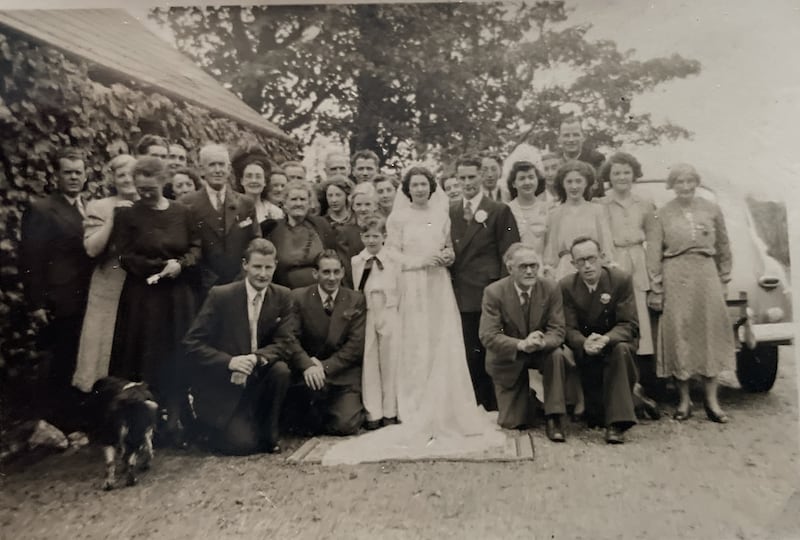
Carr has a photograph of her own parents’ wedding day. “It was the first white wedding after the war. There had been rationing, but she’s wearing a beautiful white wedding dress. Her father had been a head gardener, and she had an orange blossom crown. It was a big fancy wedding, and even local people who didn’t come to the wedding bought the photographs.” The wedding dress lived on, later cut down to make Communion clothes. “After mum died suddenly, I asked my auntie to write down on the back of the photograph, so I would know who all those connections are. You think you’ll remember,” says Carr, “but you won’t. Even your children’s birthday parties, write down who their friends are, because they’ll change and you’ll lose the thread.”
In its more extreme forms, losing that thread can give rise to feelings of being alienated from, and lost to ourselves. And notwithstanding the fact that you may end up with an incredibly valuable photograph of a future film star, rock star or otherwise famous figure in your cache of family snaps, these photographs can also become anchors for personal memory over time. At Photo Museum Ireland, archivist Brendan Maher will be leading a workshop on caring for your family photographs during the Bealtaine Festival in May. Maher has been engaging with the subject as part of the wider Photo Album of the Irish project run by the museum, which has been gathering family photographs from Ireland, the United States and Canada, and is now extending its reach farther. From this, Maher has also been exploring the use of memory therapies to better understand how you can look after your photographs today in such a way as to make them more accessible and helpful in the future.
A guide, downloadable at the Photo Museum Ireland website, has advice on storage and a whole list of what not to do to photographs, including using Sellotape and glue. “Pens can also do damage, so while it’s important to write on the back with as much detail as possible, a soft pencil is best,” says Maher. The detail is significant. The apparent subject of a photograph now may not be the most interesting thing about it later. Try to include the date, location, names, family relationships and any other context you can think of. All these can help spark memories and conversations in the future.
There’s one of my grandmother wearing trousers on a bicycle from the 1930s. She looks so modern. She’s written on the back: ‘What would JJ think?’ That’s my grandfather
— Shirley Clerkin
Those experienced in reminiscence therapy say it is most useful when photographs are ordered chronologically or presented in topics, and Maher draws attention to a guide by Rachel Ann Tee-Melegrito, available online in Medical News Today, setting out how to make a memory book from family photographs. Tee-Melegrito recommends creating an album with blank pages alongside each image, so you can write a full caption, and add more recollections as they arise. She also advises on prompts, and how to guide conversations without forcing or provoking anxiety in the case of inaccessible memories.
Most of us haven’t got around to memory books, or even photo albums. Sustainability advocate Shirley Clerkin describes the biscuit tins full of family photographs from her childhood home. Her father, Eugene, a keen photographer, had a box brownie camera, and had inherited photographs from his own parents too. Scanning these for the Photo Album of the Irish project revealed a wealth of detail. “They’re fascinating from a social point of view, from a woman’s perspective too. There’s one of my grandmother wearing trousers on a bicycle from the 1930s. She looks so modern. She’s written on the back: ‘What would JJ think?’ That’s my grandfather. They weren’t married yet, and she was making a jibe about wearing the trousers when they were.”
[ In Pictures: The Troubles through the lens of a Japanese war photographerOpens in new window ]
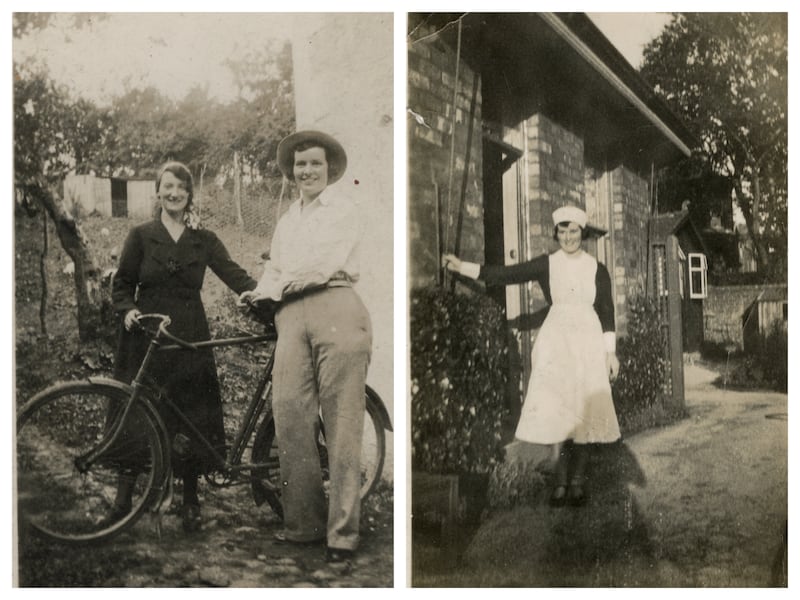
Clerkin recalls how looking through the photographs brought up many stories. “Like my grandmother going to England, she was training to be a nurse. Then her friend got blown up in a munitions factory, so she came home. That was just at the start of the second World War. It was going through the photographs that brought that up because we had photographs of her on the boat, leaving. We’d never talked about it. Her name was Eva. My grandfather John Joe had been a farmer, then he worked in a motorcycle shop, and you can see the changing transport, so there’s all this social history.”
Family photographs can knit layers of stories such as these into the bigger sweep of history, adding texture to the grand narratives. Sometimes they also challenge accepted beliefs with the evidence of lived experience. Another photograph from Clerkin’s family biscuit tin is of the family’s Chinese neighbours, taken in their back garden in Monaghan in the 1970s. “They’re wearing Aran sweaters,” she says, “and that was at a time when people said there were only people from Monaghan in Monaghan, but here’s this lovely Chinese couple.”
The role of photographs in igniting memory is something that artist, photographer and neuroscientist Joshua Sariñana is uniquely qualified to explore. Sariñana, based in Boston, explores learning and memory, and how memories are formed in the brain. He describes how our episodic memory relates to our autobiographical experiences, and how with illnesses such as Alzheimer’s, the memories could still be there, but the routes to access them break down. “You need cues in order to recall experiences, and using all your senses is helpful.” This explains how smell or music can be hugely impactful with memory loss and, as visual cues, so too are photographs. “If you can reignite the circuits, or reactivate them, it can help with the recall,” says Sariñana.
He outlines other ways in which photographs can support people with cognitive impairment. “If you can communicate, you’re building rapport and creating moments of connection. Individuals with Alzheimer’s disease may forget the actual event of, say, having the family over. But the emotional experience is not forgotten, so their mood will elevate, even if they cannot remember the experience of the event.” This is also true for those who care for them, as those moments of rapport are to be treasured.
It is not enough just to take photographs, says Sariñana. We need to review them, label them, and connect to them to embed them in our memories. Spending time with his grandparents, photographs become a key to communication. “They want me to remember, and it does help me recall all those experiences from when I was little, and they become emotional, and those attachments are super important.”
He also notes that the contemporary habit of editing and filtering images, removing people, and tweaking how we look in selfies is being studied for the effect it has on memory. “That information becomes incorporated into our autobiographical experiences, and the question is: what is then representative of what is real over the course of time?”
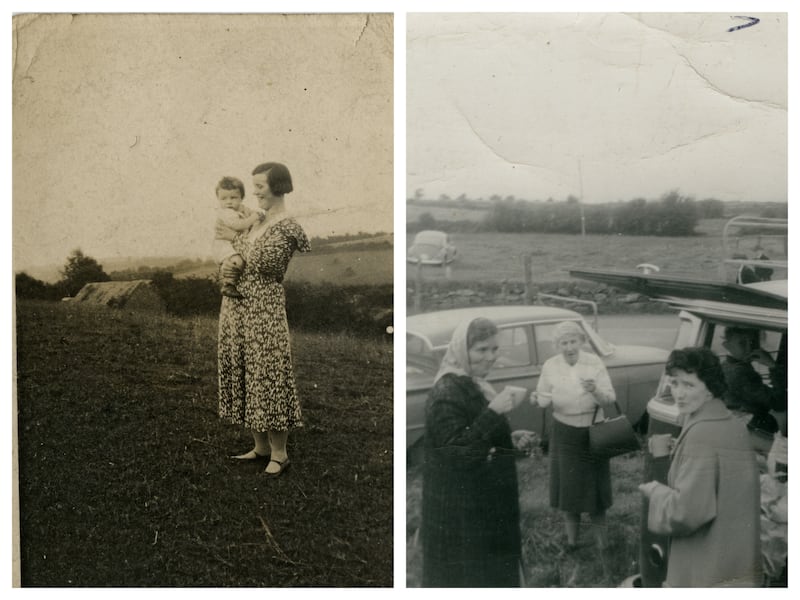
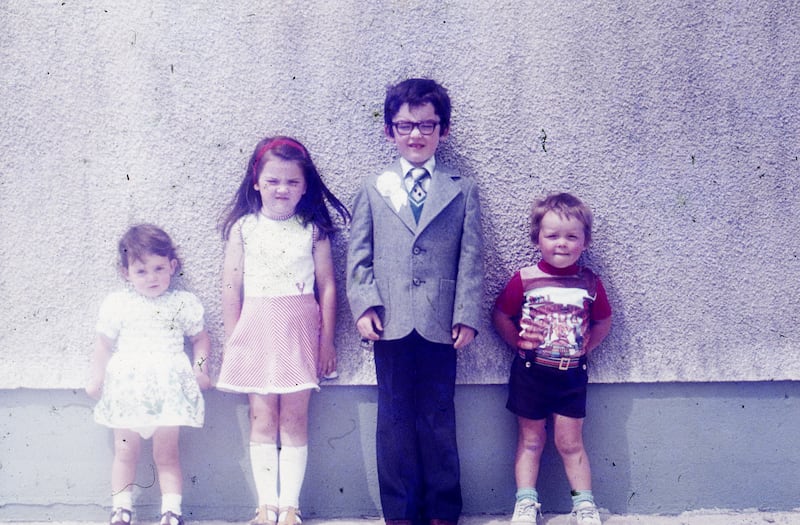
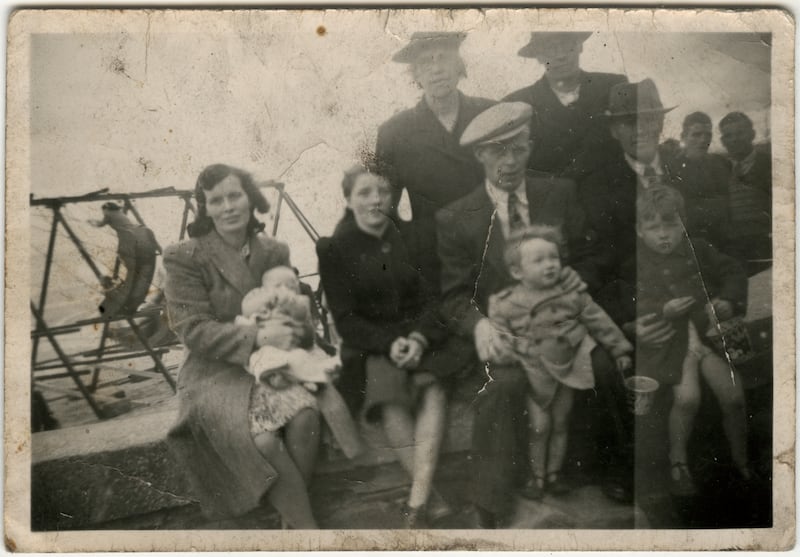
Looking at Shirley Clerkin’s family photographs: of grandparents with babies, who are now grandparents themselves; there is a rich sense of continuity and care. There is an outing to Knock, and a family group with everyone proudly done up in their Sunday best – including the appearance of one very determined-looking cardigan. Coming into colour, there is her mother, Rosemarie, with Shirley and her brother Paul as babies, excitedly in the car; and a Communion photo from a time before bouncy castles and elaborate party extravaganzas became an established thing. In some, dates, names and locations are lost. In others they are wonderfully preserved. I think of that wooden box at my parents’ house and all the fragile memories contained within, all of which could be severed at a moment’s notice. Looking after your family photographs, discussing them with parents and grandparents, and noting down everything you can, is not only an occasion for some extraordinary conversations, it might also hold the key to a better remembered future when you, or a loved one needs it most. The time to do it is now.
The Photo Museum Ireland workshop on Caring for Your Family Photographs takes place on May 18th, admission free, booking essential. photomuseumireland.ie, photoalbum.photomuseumireland.ie, medicalnewstoday.com, joshuasarinana.com.

















